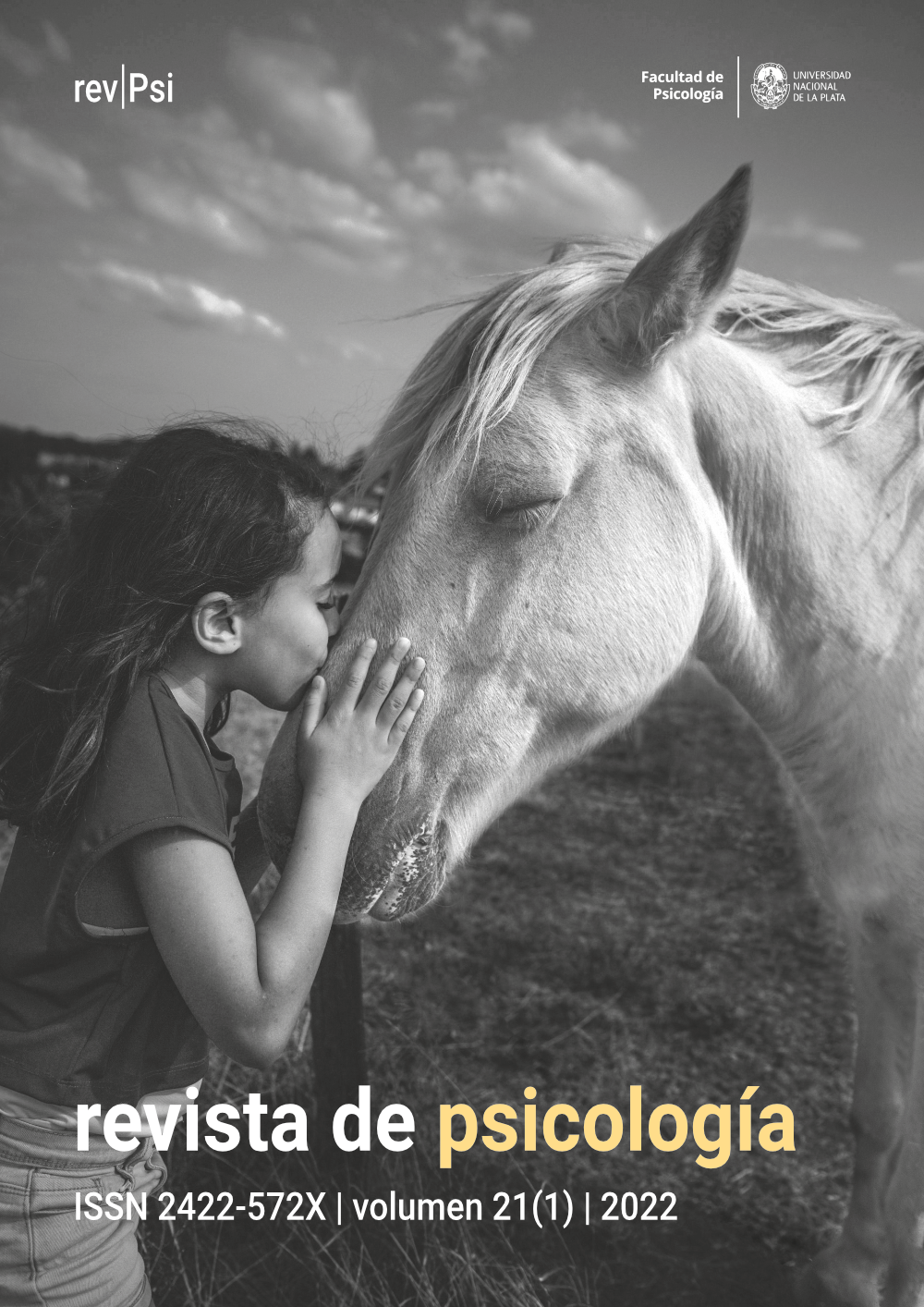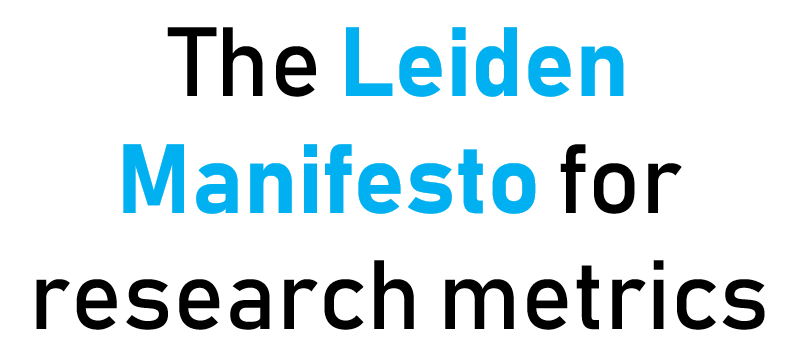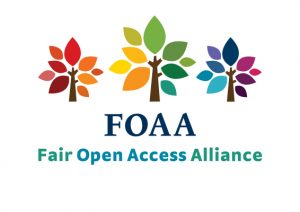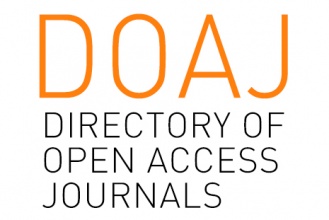Trastornos psiquiátricos del vínculo humano-animal: psicopatologías del afecto hacia los animales de compañía
DOI:
https://doi.org/10.24215/2422572Xe094Palabras clave:
animales de compañía, trastornos mentales, psicopatología, salud mental, vínculo humano-animalResumen
El vínculo humano-animal incluye componentes afectivos e implica bienestar para ambos participantes de la relación. Esto ha recibido apoyo reciente de la comunidad científica, destacando múltiples beneficios derivados para la salud humana. Sin embargo, sobrevive en la sociocultura una tendencia a patologizar la proximidad emocional con animales de compañía. Basándonos en las categorías psiquiátricas formales y desarrollos académicos, identificamos los trastornos mentales humanos desarrollados en el vínculo con animales. Estos incluyen: (1) Trastorno por acumulación de animales, (2) Trastorno de duelo complejo persistente por la pérdida de animales, (3) Trastorno de ansiedad por separación de los animales, y (4) Trastornos por atracción sexual hacia los animales. En ningún caso el exceso de afecto puede dar cuenta de su formación, sino que estos trastornos más bien dependen de características vinculares particulares. Se destaca la necesidad de investigación científica en psiquiatría sobre el vínculo humano-animal y se proponen estrategias de abordaje interdisciplinarias.
Referencias
Adams, C. L., Bonnett, B. N. y Meek, A. H. (2000). Predictors of owner response to companion animal death in 177 clients from 14 practices in Ontario. Journal of the American Veterinary Medical Association, 217(9), 1303-1309. https://doi.org/10.2460/javma.2000.217.1303
Adrian, J. A. L., Deliramich, A. N. y Frueh, B. C. (2009). Complicated grief and posttraumatic stress disorder in humans' response to the death of pets/animals. Bulletin of the Menninger Clinic, 73(3), 176-187. https://doi.org/10.1521/bumc.2009.73.3.176
American Psychiatric Association [APA] (1984). DSM III: Manual Diagnóstico y Estadístico de los Trastornos Mentales, 3era Edición: Texto revisado. Masson.
American Psychiatric Association [APA] (1994). DSM IV: Manual Diagnóstico y Estadístico de los Trastornos Mentales, 4ta Edición. Masson.
American Psychiatric Association [APA] (2013). DSM 5: Diagnostic and Statistical Manual of Mental Disorders, 5th. Edition. American Psychiatric Association.
Appleby, D. y Pluijmakers, J. (2003). Separation anxiety in dogs. The function of homeostasis in its development and treatment. The Veterinary Clinics of North America. Small Animal Practice, 33(2), 321-344. https://doi.org/10.1016/s0195-5616(02)00101-8
Arango, C. (5 de octubre de 2018). Tener un “perrhijo” podría ser señal de trastornos mentales, según la ciencia. Tendencia. Recuperado de: https://diariocorreo.pe/miscelanea/tener-un-perrhijo-podria-ser-senal-de-trastornos-mentales-segun-la-ciencia-mexico-845607/
Barnard-Nguyen, S., Breit, M., Anderson, K. A. y Nielsen, J. (2016). Pet loss and grief: Identifying at-risk pet owners during the euthanasia process. Anthrozoös, 29(3), 421-430. https://doi.org/10.1080/08927936.2016.1181362
Beetz A., Uvnäs-Moberg K., Julius H. y Kotrschal K. (2012). Psychosocial and psychophysiological effects of human-animal interactions: the possible role of oxytocin. Frontiers in Psychology, 3. https://doi.org/10.3389/fpsyg.2012.00234
Beetz, A. M. (2004). Bestiality/zoophilia: A scarcely investigated phenomenon between crime, paraphilia, and love. Journal of Forensic Psychology Practice, 4(2), 1-36. https://doi.org/10.1300/J158v04n02_01
Berman, W. H. y Sperling, M. B. (1994). The structure and function of adult attachment. En M. B. Sperling y W. H. Berman (Eds.), Attachment in adults: Clinical and developmental perspectives (pp. 1-28). Guilford Press.
Bowen, R. C., Offord, D. R. y Boyle, M. H. (1990). The prevalence of overanxious disorder and separation anxiety disorder: Results from the Ontario Child Health Study. Journal of the American Academy of Child & Adolescent Psychiatry, 29(5), 753-758. https://doi.org/10.1097/00004583-199009000-00013
Calvo, P., Duarte, C., Bowen, J., Bulbena, A. y Fatjó, J. (2014). Characteristics of 24 cases of animal hoarding in Spain. Animal Welfare, 23(2), 199-208. https://doi.org/10.7120/09627286.23.2.199
Chapman, T., Fyer, A., Mannuzza, S. y Klein, D. (1993). A comparison of treated and untreated simple phobia. American Journal of Psychiatry, 150(5), 816–818. https://doi.org/10.1176/ajp.150.5.816
Creswell, C. y Cartwright-Hatton, S. (2007). Family treatment of child anxiety: Outcomes, limitations and future directions. Clinical Child and Family Psychology Review, 10(3), 232-252. https://doi.org/10.1007/s10567-007-0019-3
Díaz Videla, M. (2017). Antrozoología y la relación humano-perro. iRojo.
Díaz Videla, M. y Olarte, M. A. (2020). Companion dogs as surrogate family members and the compensation hypothesis. Journal of Behavior, Health & Social Issues, 12(1), 15-24. http://dx.doi.org/10.22201/fesi.20070780.2020.12.1.65726
Ferrari, M., Revollo, A., Cuellar, J., Manzanelli, F., Valdi, A. L., Reyes Plazaola, P. y Díaz Videla, M. (2020). Trastornos de atracción sexual hacia animales: clasificación diagnóstica basada en una revisión sistemática. Revista de Psicopatología y Psicología Clínica, 25(2), 131-143. https://doi.org/10.5944/rppc.26288
Ferrari, M., Reyes Plazaola, P., Manzanelli, F. y Díaz Videla, M. (2020). Sexo humano-animal, más allá de los prejuicios. ¿Qué aportan las investigaciones? Calidad de Vida y Salud, 13(Edición Especial), 255-276.
Gerwolls, M. K. y Labott, S. M. (1994). Adjustment to the death of a companion animal. Anthrozoös, 7(3), 172-187. https://doi.org/10.2752/089279394787001826
Green, J. D., Mathews, M. A. y Foster, C. A. (2009). Another kind of “interpersonal” relationship: humans, companion animals, and attachment theory. En E. Cuyler y M. Ackhart (Eds.), Relationships and psychology: A practical guide (pp. 87-108). Novo Science Publishers.
Herzog, H. A. (2012). Los amamos, los odiamos y... los comemos: esa relación tan especial con los animales. Kairós.
Hoarding of Animals Research Consortium (HARC) (2002). Health implications of animal hoarding. Health & Social Work, 27(2), 125-136. https://doi.org/10.1093/hsw/27.2.125
Hosey, G. y Melfi, V. (2014). Human-animal interactions, relationships and bonds: a review and analysis of the literature. International Journal of Comparative Psychology, 27(1), 117-142. https://psycnet.apa.org/record/2014-07616-008
Irvine, J. D. y Nwachukwu, K. (2014). Recognizing Diogenes syndrome: a case report. BMC Research Notes 7, 276. https://doi.org/10.1186/1756-0500-7-276
Kanat-Maymon, Y., Antebi, A. y Zilcha-Mano, S. (2016). Basic psychological need fulfillment in human-pet relationships and well-being. Personality and Individual Differences, 92, 69-73. https://doi.org/10.1016/j.paid.2015.12.025
Katz, J. (8 de abril de 2004). Petophilia. Heavy Petting. Slate. Recuperado de: https://slate.com/news-and-politics/2004/04/do-you-love-your-dog-too-much.html
Kim, H.-J., Steketee, G. y Frost, R. O. (2001). Hoarding by elderly people. Health & Social Work, 26(3), 176–184. https://doi.org/10.1093/hsw/26.3.176
Kins, E., Soenens, B. y Beyers, W. (2011). “Why do they have to grow up so fast?” Parental separation anxiety and emerging adults' pathology of separation‐individuation. Journal of Clinical Psychology, 67(7), 647-664. https://doi.org/10.1002/jclp.20786
Kinsey, A. C., Pomery, W. B., y Martin, C. E. (1948). Sexual behavior in the human male. W. B. Saunders.
McConnell, A. R., Brown, C. M., Shoda, T. M., Stayton, L. E. y Martin, C. E. (2011). Friends with benefits: On the positive consequences of pet ownership. Journal of Personality and Social Psychology, 101(6), 1239-1252. https://doi.org/10.1037/a0024506
McCutcheon, K. A. y Fleming, S. J. (2001). Grief resulting from euthanasia and natural death of companion animals. OMEGA - Journal of Death and Dying, 44(2), 169-188.
McNicholas, J. y Collis, G. M. (1995). The end of a relationship: Coping with pet loss. En J. McNicholas y G. M. Collis, The Waltham book of human–animal interaction: Benefits and responsibilities of pet ownership (pp. 127-143). https://doi.org/10.1016/B978-0-08-042284-8.50016-5
Miletski, H. (2002). Understanding bestiality and zoophilia. East West Publishing
Mornement, K. (2018). Animals as companions. En C. G. Scanes y S. R. Toukhsati (Eds.), Animals and human society (pp. 281-304). Academic Press.
Nadal, Z., Ferrari, M., Lora, J., Revollo, A., Nicolas, F., Astegiano, S. y Díaz Videla, M. (2020). Noah's syndrome: Systematic review of animal hoarding disorder. Human-Animal Interaction Bulletin, 10(1), 1-21.
Ockenden, E. M., De Groef, B. y Marston, L. (2014). Animal hoarding in Victoria, Australia: An exploratory study. Anthrozoös, 27(1), 33-47. https://doi.org/10.2752/175303714X13837396326332
Parthasarathy, V. y Crowell-Davis, S. L. (2006). Relationship between attachment to owners and separation anxiety in pet dogs (Canis lupus familiaris). Journal of Veterinary Behavior, 1(3), 109-120. https://doi.org/10.1016/j.jveb.2006.09.005
Patronek, G. J. (1999). Hoarding of animals: An under-recognized public health problem in a difficult-to-study population. Public health reports, 114(1), 81. https://dx.doi.org/10.1093/2Fphr/2F114.1.81
Reinisch, A. I. (2009). Characteristics of six recent animal hoarding cases in Manitoba. The Canadian Veterinary Journal, 50(10), 1069.
Rynearson, E.K. (1978). Humans and pets and attachment. British Journal of Psychiatry, 133, 550–555.
Sable, P. (2013). The pet connection: An attachment perspective. Clinical Social Work Journal, 41(1), 93-99. https://doi.org/10.1007/s10615-012-0405-2
Schwartz, S. (2003). Separation anxiety syndrome in dogs and cats. Journal of the American Veterinary Medical Association, 222(11), 1526-1532.
Sluzki, C. E. (1996). La red social: frontera de la práctica sistémica. Gedisa.
Voith, V. L. y Borchelt, P. L. (1985). Separation anxiety in dogs. The Compendium on Continuing Education for the Practicing Veterinarian, 7, 42-52.
Wollrab, T. I. (1998). Human-animal bond issues. Journal of American Veterinary Medical Association, 212(11), 1675.
Wrobel, T. A. y Dye, A. L. (2003). Grieving pet death: Normative, gender, and attachment issues. OMEGA - Journal of Death and Dying, 47(4), 385-393.
Zilcha-Mano, S., Mikulincer, M. y Shaver, P. R. (2011). An attachment perspective on human–pet relationships: Conceptualization and assessment of pet attachment orientations. Journal of Research in Personality, 45(4), 345-357. https://doi.org/10.1016/j.jrp.2011.04.001
Zilcha-Mano, S., Mikulincer, M. y Shaver, P. R. (2012). Pets as safe havens and secure bases: The moderating role of pet attachment orientations. Journal of Research in Personality, 46(5), 571-580. https://doi.org/10.1016/j.jrp.2012.06.005
Descargas
Publicado
Número
Sección
Licencia

Esta obra está bajo una licencia internacional Creative Commons Atribución 4.0.
![]()
Los autores/as que publiquen en esta revista aceptan las siguientes condiciones:
- Los autores/as conservan los derechos de autor y ceden a la revista el derecho de la primera publicación, con el trabajo registrado con la licencia de atribución de Creative Commons, que permite a terceros utilizar lo publicado siempre que mencionen la autoría del trabajo y a la primera publicación en esta revista.
- Los autores/as pueden realizar otros acuerdos contractuales independientes y adicionales para la distribución no exclusiva de la versión del artículo publicado en esta revista (p. ej., incluirlo en un repositorio institucional o publicarlo en un libro) siempre que indiquen claramente que el trabajo se publicó por primera vez en esta revista.
- Se permite y recomienda a los autores/as a publicar su trabajo en Internet (por ejemplo en páginas institucionales o personales) antes y durante el proceso de revisión y publicación, ya que puede conducir a intercambios productivos y a una mayor y más rápida difusión del trabajo publicado (veaThe Effect of Open Access).




































